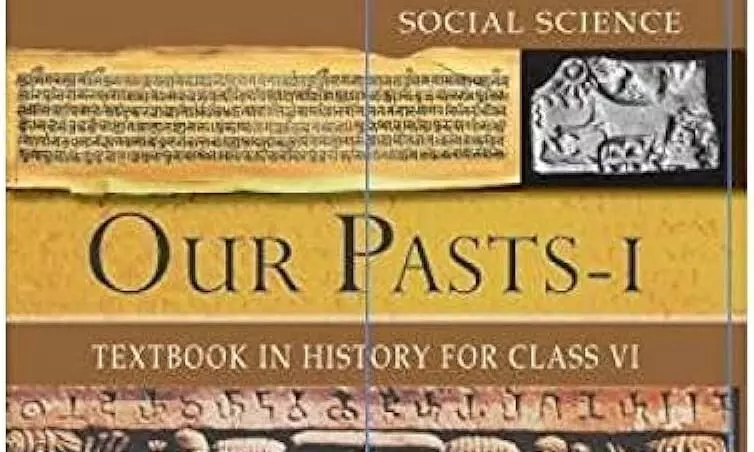
NCERT's new class 6 textbook emphasizes Hindu Rights narratives
text_fieldsThe National Council of Educational Research and Training (NCERT) has released a new Class 6 social science textbook, "Exploring Society: India and Beyond," consolidating history, political science, and geography into a single volume.
However, this move has ignited a heated debate among historians and educators, as the textbook incorporates contentious historical narratives closely aligned with the Hindu Right's ideological perspectives, according to an analytical report published in The Wire.
The new textbook introduces the term "Indus-Sarasvati" or "Sindhu-Sarasvati" civilisation to describe the ancient Indus Valley Civilisation, deviating from the traditionally accepted name.
This nomenclature supports the claim that the Sarasvati river, mentioned in the Rig Veda, was a real entity whose desiccation led to the civilisation's decline. This assertion bolsters the Hindu Right's broader hypothesis that Aryans were indigenous to the Indian subcontinent, dismissing the theory of Aryan migration.
Professional historians have consistently refuted this hypothesis, noting that the Rig Veda was composed several centuries after the Harappan civilisation's decline. Despite this, the textbook emphasizes the Sarasvati River's significance, proposing that its drying up played a crucial role in the collapse of Harappan urban centres like Kalibangan and Banawali. This stands in contrast to the previous textbook, which explored multiple factors for the civilisation's decline, including deforestation, flooding, and loss of political control.
The textbook also includes a map depicting the Sarasvati River valley, identifying the Ghaggar in India and the Hakra in Pakistan as its remnants. Critics argue that this portrayal oversimplifies and misrepresents the historical and geographical complexities surrounding the Sarasvati River's existence. Scholars like Professor M.S. Jaglan highlight the lack of scientific evidence supporting the river's historical course and its proposed link to the Ghaggar.
The new social science textbook is aligned with the National Education Policy (NEP) 2020 and the National Curriculum Framework for School Education (NCF-SE) 2023, which advocate for integrating traditional Indian knowledge into the curriculum.
NCERT sources assert that the new content reflects these guidelines and that comparisons with the old textbooks are therefore irrelevant. The textbook features five interdisciplinary themes, aiming to make the study of social science more cohesive and manageable for students.
However, the textbook's approach has raised concerns about the politicization of education. Notably, it omits references to caste-based discrimination and the term "Dalit," previously addressed in the old political science textbook. The new edition excludes sections on B. R. Ambedkar and his struggle against caste exploitation, shifting the focus to cultural diversity in food, textiles, festivals, and literature. The term "caste" appears only once, in a quote by sociologist André Béteille.
Furthermore, the textbook claims that India had a "prime meridian" called the "Ujjayini meridian," predating the Greenwich meridian. This assertion appears to be an effort to emphasize India's historical scientific advancements and decolonize historical narratives.
Critics argue that the textbook's revisions serve a political agenda, promoting a particular ideological viewpoint rather than presenting balanced historical facts. The emphasis on unproven theories and the exclusion of critical social issues are seen as attempts to reshape young minds according to specific ideological beliefs.











